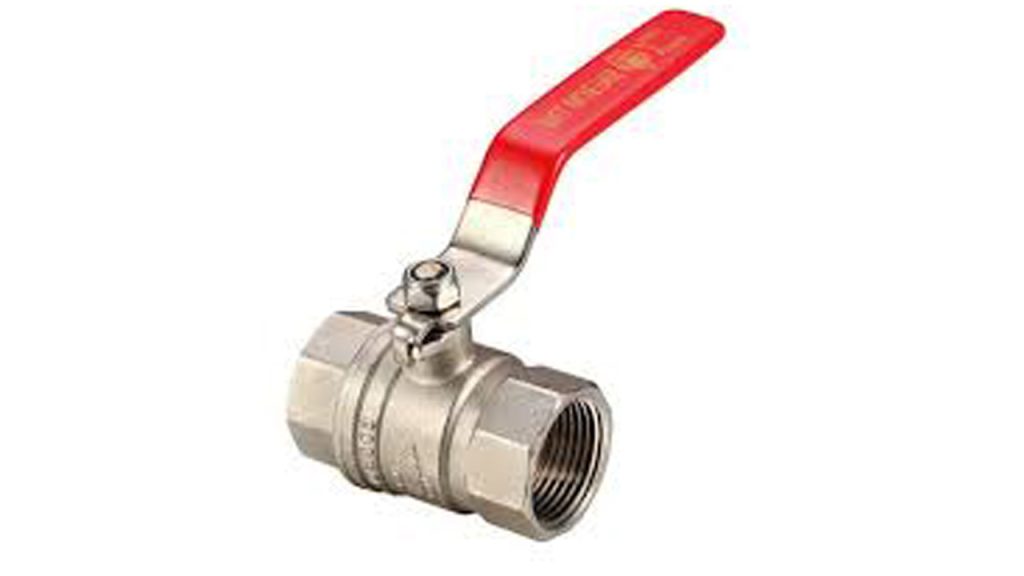When it comes to plumbing systems, understanding the different components is essential. One such component is the ball valve, which plays a key role in controlling the flow of water or other fluids. But what exactly is a ball valve in plumbing?
A ball valve is a type of valve that uses a spherical ball with a hole in the middle to regulate fluid flow. The ball is typically made of brass, stainless steel, or PVC and rotates within the valve body to open or close the flow. This design allows for quick, quarter-turn operation, making ball valves highly efficient and reliable.

Photo by tameson
How does a ball valve work?
Ball valves work by using a hollow, perforated ball to control the flow of fluids. When the handle or lever of the ball valve is turned, the ball inside the valve rotates to align the hole in the ball with the flow path, allowing the fluid to pass through.
When the handle or lever is turned again, the ball rotates to close the flow path, effectively stopping the flow of fluid. This simple yet effective mechanism makes ball valves easy to operate and control.
One of the key advantages of ball valves is their ability to provide a tight seal when closed. The ball inside the valve is pressed against the valve seat, creating a watertight seal that prevents leakage. This feature makes ball valves ideal for applications where leakage is not acceptable, such as shutting off the water supply to a toilet or sink.
Advantages of using ball valves in plumbing systems
There are several advantages to using ball valves in plumbing systems. Firstly, as mentioned earlier, ball valves provide a tight seal when closed, preventing any leakage. This is crucial in plumbing applications where water or fluid leakage can cause damage or waste resources.
Secondly, ball valves offer quick and easy operation. With just a quarter-turn of the handle or lever, the flow can be opened or closed, allowing for efficient control of water or fluid supply. This makes ball valves a convenient choice for both plumbers and homeowners alike.
Another advantage of ball valves is their durability and ability to withstand high pressure and temperature. The materials used to construct the ball valve, such as brass, stainless steel, or PVC, are chosen for their strength and resistance to corrosion. This makes ball valves suitable for a wide range of plumbing applications, including those involving hot water or high-pressure systems.
If you found this helpful, you’ll love this post too! What is a Plumbing Nipple: Essential Guide for Homeowners
Types of ball valves commonly used in plumbing
There are various types of ball valves commonly used in plumbing systems, each with its own specific features and applications. One of the most common types is the full-port ball valve, also known as a full-bore ball valve. This type of ball valve has a larger ball and a larger flow path, allowing for maximum flow capacity.
Full-port ball valves are often used in applications where high flow rates are required, such as main water supply lines or irrigation systems.
Another type of ball valve is the standard-port ball valve, also referred to as a reduced-bore ball valve. Unlike the full-port ball valve, the standard-port ball valve has a smaller ball and flow path, resulting in reduced flow capacity. Standard-port ball valves are commonly used in residential plumbing applications, such as shut-off valves for toilets or sinks.
In addition to full-port and standard-port ball valves, there are also multi-port ball valves available. These ball valves have multiple ports or openings, allowing for more complex flow configurations. Multi-port ball valves are often used in applications where multiple flow paths need to be controlled, such as diverting water flow in irrigation systems or switching between different water sources.
Proper installation and maintenance of ball valves
Proper installation and maintenance of ball valves is crucial to ensure their optimal performance and longevity. When installing a ball valve, it is important to follow the manufacturer’s instructions and guidelines. This includes ensuring that the valve is properly aligned with the flow direction, using the appropriate sealing materials, and tightening the connections securely.
Regular maintenance is also necessary to keep ball valves in good working condition. This includes periodically inspecting the valve for any signs of leaks, corrosion, or damage. It is also recommended to lubricate the valve’s moving parts, such as the handle or lever, to ensure smooth operation.
If any issues or abnormalities are detected during maintenance, it is important to address them promptly to prevent further damage or malfunction.
Common issues and troubleshooting tips for ball valves
Like any plumbing component, ball valves can experience issues or malfunctions over time. Here are some common issues that may arise with ball valves and some troubleshooting tips:
Leakage
If a ball valve is leaking, it may be due to a damaged or worn-out seal. In this case, replacing the seal or the entire valve may be necessary.
Stiff operation
If a ball valve is difficult to operate or requires excessive force to turn, it may be due to debris or sediment buildup. Flushing the valve with clean water or disassembling and cleaning the valve can help resolve this issue.
Noisy operation
If a ball valve is making noise when operated, it may be due to loose internal components or water hammer. Tightening the internal components or installing water hammer arrestors can help reduce the noise.
Incomplete shut-off
If a ball valve does not completely shut off the flow of fluid, it may be due to a damaged ball or seat. Replacing the ball or seat can help resolve this issue.
Comparing ball valves to other types of valves in plumbing systems
While ball valves are widely used in plumbing systems, there are other types of valves that serve different purposes. Two common types of valves used in plumbing are gate valves and globe valves.
Gate valves are designed to provide a full flow path when fully open, allowing for maximum flow capacity. However, gate valves require multiple turns to open or close, making them less efficient compared to ball valves. Gate valves are commonly used in applications where a full flow path is required, such as main water supply lines or fire sprinkler systems.
Globe valves, on the other hand, are designed to provide precise control of flow. They have a disk or plug that moves up and down to regulate flow, allowing for fine-tuning of water or fluid supply. Globe valves are commonly used in applications where flow control is critical, such as regulating water temperature in hot water tanks or controlling flow in heating systems.
When comparing ball valves to gate valves and globe valves, it is important to consider the specific requirements of the plumbing system and the intended application. Each type of valve has its own advantages and limitations, and choosing the right valve depends on factors such as flow requirements, space constraints, and ease of operation.
Safety considerations when using ball valves in plumbing
While ball valves are generally safe to use in plumbing systems, there are some safety considerations to keep in mind. Firstly, it is important to ensure that the ball valve is properly installed and secured. Loose connections or improper alignment can lead to leaks or malfunctions, which can cause damage or injury.
Secondly, when working with ball valves that are connected to pressurized systems, it is important to relieve the pressure before performing any maintenance or repairs. Failure to do so can result in sudden release of pressure, which can be dangerous.
Lastly, when working with ball valves in areas where freezing temperatures are expected, it is crucial to protect the valves from freezing. Freezing can cause the valve body to crack or burst, leading to leaks or complete failure. Insulating the valves or draining the water from the system can help prevent freezing and potential damage.
Where to buy ball valves for plumbing projects
Ball valves can be purchased from various sources, including local plumbing supply stores, home improvement centers, and online retailers. When choosing where to buy ball valves for plumbing projects, it is important to consider factors such as product quality, availability, and customer support.
Local plumbing supply stores often carry a wide range of ball valves, allowing you to see and compare different options in person. These stores also offer the advantage of knowledgeable staff who can provide guidance and recommendations based on your specific needs.
Home improvement centers, such as hardware stores, may also carry ball valves, although the selection may be more limited compared to plumbing supply stores. Online retailers offer the convenience of shopping from home and often provide detailed product descriptions and customer reviews to help you make an informed decision.
Conclusion
A ball valve is a crucial component in plumbing systems that allows for efficient control of water or fluid flow. With its simple yet effective design, a ball valve provides a tight seal, quick operation, and durability. Understanding the basics of a ball valve, including how it works, its advantages, and the different types available, can help both professionals and homeowners make informed decisions when it comes to their plumbing system.
By properly installing and maintaining ball valves, addressing common issues, and considering safety considerations, the reliable performance of ball valves can be ensured. Whether you’re shutting off the water supply to a sink or regulating flow in an irrigation system, a ball valve is a versatile and reliable choice for your plumbing needs.

I’m Allen Kim, the chief editor of plumbinginto. I am a mid level plumber and assign to an local firm over 4 years of experience. During the working period, most of my experience is related to the house plumbing. I learned about the thing, when working with most experienced people in this sector, one must be as good as the inspector or better with knowledge of the project as well as the practical aspects of plumbing industry.